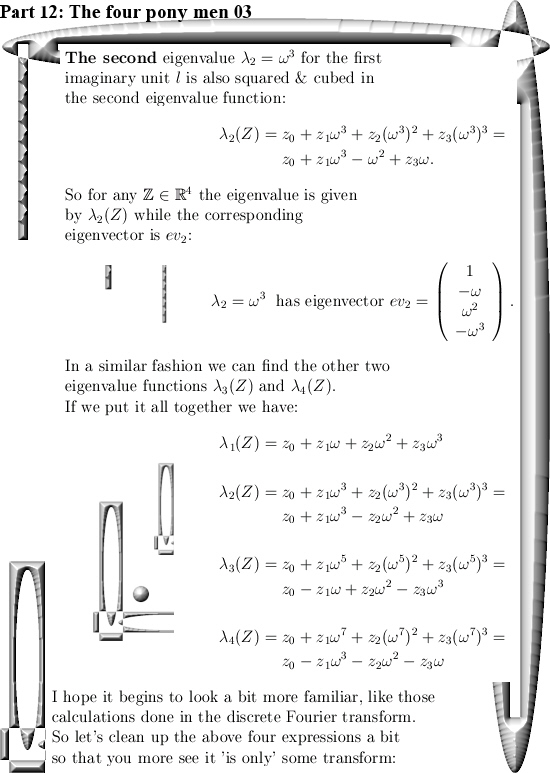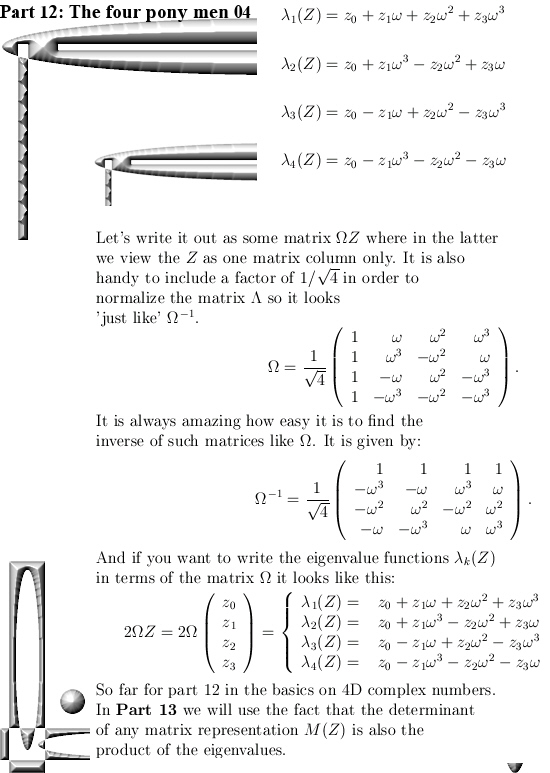In Part 11 we found the eigenvalues and eigenvectors of the first imaginary unit l (with of course the property l^4 = -1). But if we have those eigenvalues for l,it is easy to find the eigenvectors of powers of l.
But every 4D complex number is a sum of a real part and the three imaginary parts with the units l, l ^2 and l ^3. So from a linear algebra point of view it is also easy to find the eigenvalues of such combinations of l. Needless to say that in this post you should read l and it powers mostly as it’s matrix representation M(l).
I have to admit that I very often avoid the constant need for the matrix representation, for example I mostly write det(l) for the determinant of M(l). But it makes texts just so unreadable if you constant write det(M(l)), I do not like that.
When you understand how to calculate the eigenvalue functions as shown below, please remark it looks a like the so called discrete Fourier transform.
This post is five pictures long (each 550×775 pixels) although the last picture is rather empty… And why no an empty picture? After all when you had a paper book in the good old days, there were always empty pages in it. Sometimes it was even written that ‘This page is left empty intentionally’. And in those long lost years that was the crime of the century because if you write on a page that it is empty, that is never true…





In the next post we will take a look at the missing equation we still have when it comes to the calculation of the 4D exponential curve when it comes to the sphere/cone equation. we missed one equation to arrive at a 1D solution for our exponential curve.
If you also include the demand that the determinant of the exponential curve is 1 all of the time, you can squeeze out more equations inside the 4D complex numbers.
Before we say goodbye, here is a link to the matrix representation of the discrete Fourier transform. But take you time when thinking about matrices like in the link or the Omega matrix as above.
DFT matrix
https://en.wikipedia.org/wiki/DFT_matrix
Ok, that was it. Till updates.